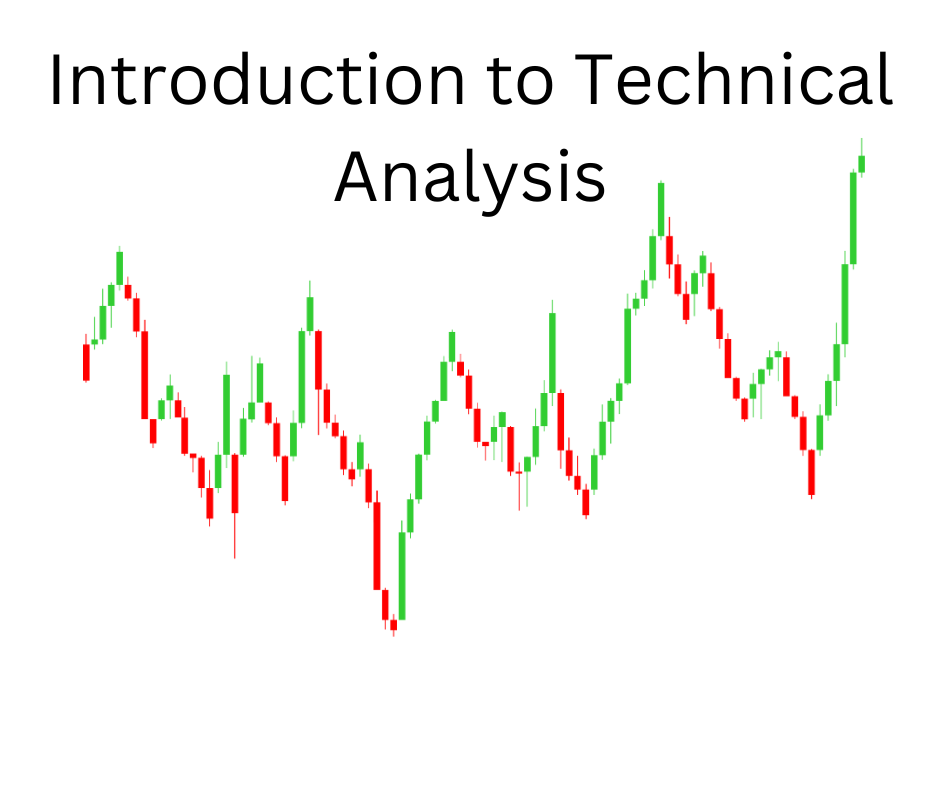I remember when I first started trading Forex; it seemed like a complex and intimidating world. However, after learning about technical analysis, I discovered that I could make more informed trading decisions. Let me share my knowledge with you, so you too can become a successful Forex trader.

What is Technical Analysis?
Technical analysis is a method used by traders to forecast future price movements in the Forex market. It relies on historical price data, such as past price movements and trading volume, to identify trends and potential trading opportunities. By studying historical patterns, technical analysts seek to predict where the market is heading.
Difference between Technical Analysis and Fundamental Analysis
While technical analysis focuses on historical price data, fundamental analysis examines the underlying economic and financial factors that influence currency values. While technical analysts believe that all relevant information is already reflected in the price, fundamental analysts consider external factors, such as interest rates, inflation, and political events, to predict future price movements.
Advantages of Technical Analysis in Forex Trading
Technical analysis offers several advantages in Forex trading. First, it helps traders identify trends, support and resistance levels, and potential entry and exit points. Second, it enables traders to manage risk by setting stop-loss orders and profit targets. Finally, technical analysis can be applied to any time frame, making it suitable for various trading styles, from scalping to position trading.
Key Concepts in Technical Analysis
Price Action
Price action refers to the movement of a currency’s price over time. By analyzing price action, traders can identify patterns and trends that may indicate future price movements. Price action analysis often involves candlestick charts, which display open, high, low, and close prices for a specific time period.
Trends
Definition of Trends
A trend is the general direction in which the market is moving. Identifying trends is crucial in technical analysis, as they can help traders make informed decisions about when to enter and exit trades.
Types of Trends
There are three main types of trends: uptrends, downtrends, and sideways trends. In an uptrend, prices are moving higher, indicating that buyers are in control. In a downtrend, prices are moving lower, suggesting that sellers are dominant. In a sideways trend, prices move within a range, reflecting a balance between buyers and sellers.
Support and Resistance
Support and resistance levels are price points where buying and selling pressure tend to converge. Support represents a price level where demand is strong enough to prevent the price from falling further, while resistance is a price level where selling pressure is strong enough to prevent the price from rising.
How to Identify Support and Resistance Levels
Support and resistance levels can be identified by examining historical price data. Look for areas where prices have consistently bounced off a specific level, either reversing or consolidating before continuing in their original direction.
Chart Patterns
Definition of Chart Patterns
Chart patterns are formations that appear on price charts, reflecting the psychological behavior of market participants. Technical analysts use these patterns to predict future price movements.
Types of Chart Patterns
There are various chart patterns, including continuation patterns (e.g., flags and pennants) and reversal patterns (e.g., head and shoulders, double tops/bottoms). Continuation patterns suggest that the existing trend will continue, while reversal patterns indicate a potential change in trend direction.
How to Trade Chart Patterns
To trade chart patterns, traders typically enter a position when the pattern is confirmed, which occurs when the price breaks out of the pattern. They then set stop-loss orders and profit targets based on the pattern’s size and structure.
Technical Indicators
Definition of Technical Indicators
Technical indicators are mathematical calculations based on price, volume, or open interest data. They provide additional insight into the market’s direction and strength, helping traders make more informed decisions.
Types of Technical Indicators
Trend Indicators
Trend indicators, such as moving averages and the Parabolic SAR, help traders identify and follow market trends.
Momentum Indicators
Momentum indicators, like the Relative Strength Index (RSI) and the Moving Average Convergence Divergence (MACD), measure the speed and strength of price movements.
Volatility Indicators
Volatility indicators, such as Bollinger Bands and the Average True Range (ATR), assess the degree of market volatility and help traders manage risk.
Oscillators
Oscillators go up and down between two set values. Examples of oscillators include Stochastics, MACD, and RSI. Oscillators can be used to understand divergence and overbought and oversold conditions.
How to Use Technical Indicators in Forex Trading
Technical indicators can be used in conjunction with price action analysis and other technical tools to confirm trends, identify potential entry and exit points, and manage risk. Traders often use multiple indicators to gain a more comprehensive view of the market.
Trading Strategies with Technical Analysis
Scalping
Scalping is a short-term trading strategy that involves entering and exiting trades within minutes or even seconds, aiming to capture small price movements. Technical analysis plays a crucial role in scalping, as traders rely on indicators and price action to identify high-probability trade setups.
Day Trading
Day trading involves opening and closing positions within a single trading day. Day traders use technical analysis to find trade opportunities and manage their positions. They typically focus on intraday timeframes and employ various technical tools and indicators to make informed decisions.
Swing Trading
Swing trading is a medium-term strategy in which traders hold positions for several days or weeks, aiming to profit from larger price swings. Swing traders rely heavily on technical analysis to identify trends, support and resistance levels, and potential entry and exit points.
Position Trading
Position trading is a long-term strategy that involves holding positions for weeks, months, or even years. Position traders use technical analysis, in conjunction with fundamental analysis, to identify long-term trends and investment opportunities.
Tools and Platforms for Technical Analysis
MetaTrader 4
MetaTrader 4 (MT4) is a popular trading platform that offers advanced technical analysis tools, including customizable charts, a wide range of technical indicators, and the ability to create and implement automated trading strategies.
How to Use MetaTrader 4 for Technical Analysis
To use MT4 for technical analysis, traders can customize their charts by selecting the desired time frame, applying technical indicators, and drawing support and resistance lines. They can also create and implement Expert Advisors (EAs) for automated trading based on their technical analysis strategies.
TradingView
TradingView is a web-based charting and analysis platform that offers a wide range of technical analysis tools, including advanced chart types, custom indicators, and the ability to create and share trading ideas with a large community of traders.
How to Use TradingView for Technical Analysis
To use TradingView for technical analysis, traders can access its extensive library of indicators and charting tools, draw trendlines and support/resistance levels, and collaborate with other users to refine their trading strategies.
Other Tools and Platforms
There are numerous other tools and platforms available for technical analysis, such as NinjaTrader, Thinkorswim, and cTrader. Each platform has its own unique features and capabilities, so it’s essential to choose the one that best suits your trading style and needs.
Conclusion
Technical analysis is a powerful tool for Forex traders, providing valuable insights into market trends, potential trade setups, and risk management. By understanding the key concepts and techniques of technical analysis, traders can make more informed decisions and improve their overall trading performance.
FAQs
What is the difference between technical analysis and fundamental analysis?
Technical analysis focuses on historical price data to predict future price movements, while fundamental analysis examines economic and financial factors that influence currency values.
What are the key concepts in technical analysis?
The key concepts in technical analysis include price action, trends, support and resistance, and chart patterns.
What are technical indicators and how are they used in forex trading?
Technical indicators are mathematical calculations based on price, volume, or open interest data. They provide additional insights into the market’s direction and strength, helping traders make more informed decisions. Technical indicators can be used alongside price action analysis and other technical tools to confirm trends, identify potential entry and exit points, and manage risk.
What are some common technical analysis tools and platforms?
Some common technical analysis tools and platforms include MetaTrader 4, TradingView, NinjaTrader, Thinkorswim, and cTrader.
What are some common mistakes to avoid in technical analysis?
Common mistakes to avoid in technical analysis include relying solely on a single indicator, ignoring the broader market context, overfitting trading strategies, and failing to manage risk properly. To avoid these pitfalls, traders should use multiple technical tools and indicators, consider the overall market conditions, and implement proper risk management techniques.
How can traders improve their technical analysis skills?
To improve their technical analysis skills, traders can:
Study and understand the key concepts of technical analysis, such as price action, trends, support and resistance levels, and chart patterns.
Learn about various technical indicators and how they can be used to confirm trends, identify potential entry and exit points, and manage risk.
Practice using different charting tools and platforms to gain hands-on experience in applying technical analysis to real market data.
Engage with the trading community by participating in forums, attending webinars, or joining trading groups to learn from experienced traders and share ideas.
Regularly review and evaluate their trading performance to identify strengths and weaknesses and fine-tune their technical analysis strategies.
By continually learning and practicing, traders can enhance their technical analysis skills and increase their chances of success in the Forex market.
Can technical analysis be applied to other financial markets besides Forex?
Yes, technical analysis can be applied to other financial markets, such as stocks, commodities, indices, and cryptocurrencies. The principles and techniques of technical analysis remain largely the same across different markets, although specific market characteristics may require adjustments to the analysis or the application of different tools and indicators.
